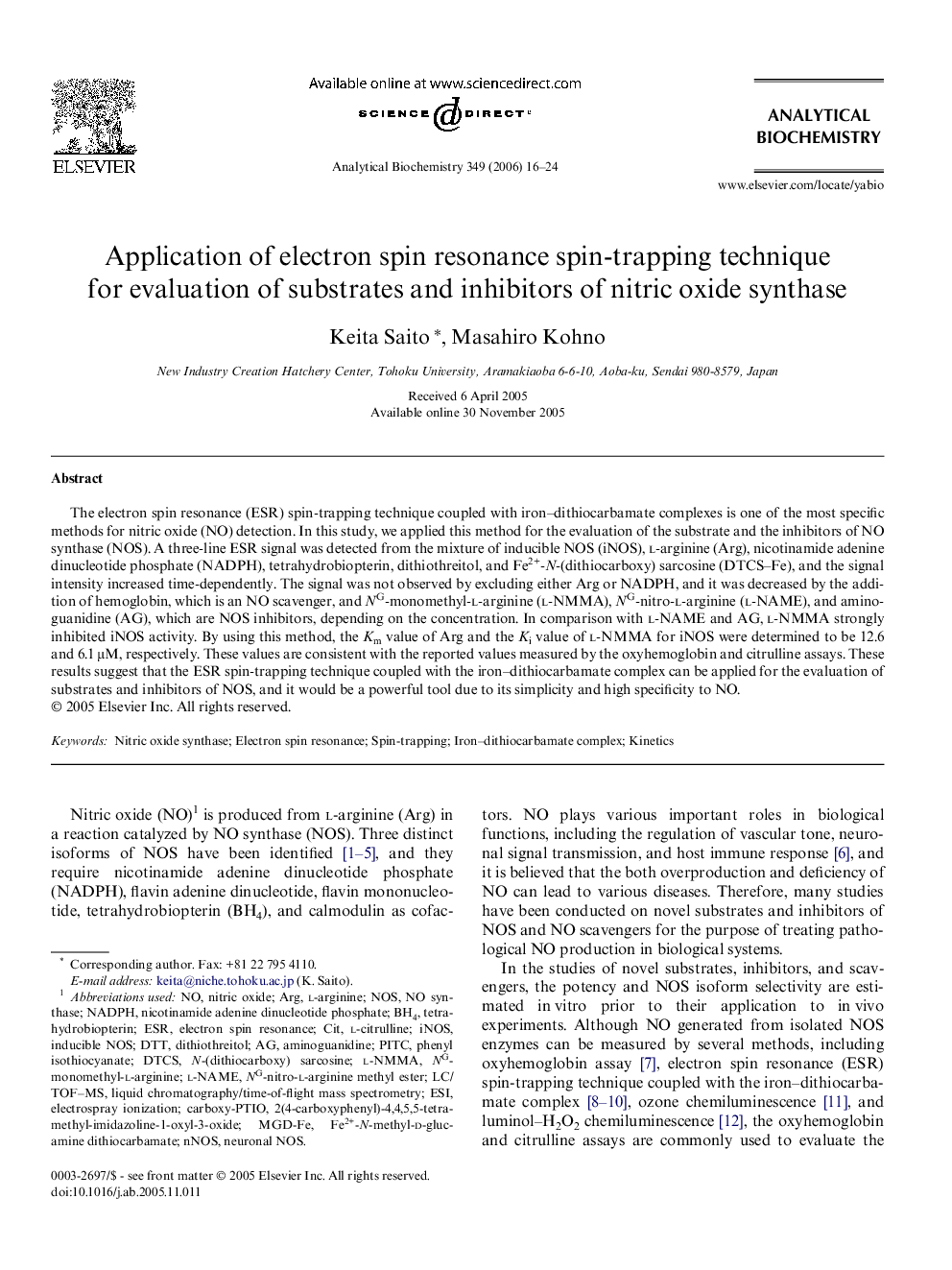| Article ID | Journal | Published Year | Pages | File Type |
|---|---|---|---|---|
| 1176239 | Analytical Biochemistry | 2006 | 9 Pages |
The electron spin resonance (ESR) spin-trapping technique coupled with iron–dithiocarbamate complexes is one of the most specific methods for nitric oxide (NO) detection. In this study, we applied this method for the evaluation of the substrate and the inhibitors of NO synthase (NOS). A three-line ESR signal was detected from the mixture of inducible NOS (iNOS), l-arginine (Arg), nicotinamide adenine dinucleotide phosphate (NADPH), tetrahydrobiopterin, dithiothreitol, and Fe2+-N-(dithiocarboxy) sarcosine (DTCS–Fe), and the signal intensity increased time-dependently. The signal was not observed by excluding either Arg or NADPH, and it was decreased by the addition of hemoglobin, which is an NO scavenger, and NG-monomethyl-l-arginine (l-NMMA), NG-nitro-l-arginine (l-NAME), and aminoguanidine (AG), which are NOS inhibitors, depending on the concentration. In comparison with l-NAME and AG, l-NMMA strongly inhibited iNOS activity. By using this method, the Km value of Arg and the Ki value of l-NMMA for iNOS were determined to be 12.6 and 6.1 μM, respectively. These values are consistent with the reported values measured by the oxyhemoglobin and citrulline assays. These results suggest that the ESR spin-trapping technique coupled with the iron–dithiocarbamate complex can be applied for the evaluation of substrates and inhibitors of NOS, and it would be a powerful tool due to its simplicity and high specificity to NO.
